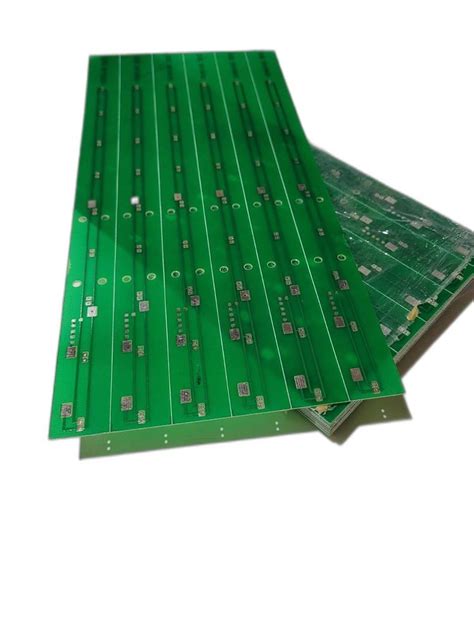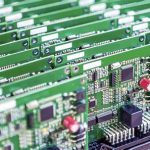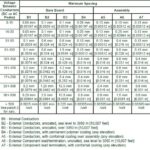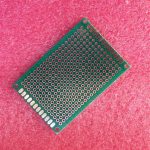Introduction to PCB Fabrication
Printed Circuit Board (PCB) fabrication is a critical process in the electronics industry, enabling the creation of complex electronic circuits on a single board. PCB fabrication involves the creation of conductive pathways, or traces, on a non-conductive substrate, typically made of fiberglass or other composite materials. These traces connect various electronic components, such as resistors, capacitors, and integrated circuits, to form a functional electronic device.
The Importance of PCB Fabrication
PCB fabrication plays a vital role in the development and production of electronic devices across various industries, including:
- Consumer electronics
- Automotive
- Aerospace
- Medical devices
- Industrial automation
The quality and reliability of PCB fabrication directly impact the performance and longevity of the final product. As such, it is essential to understand the various aspects of PCB fabrication and assembly to ensure the best possible outcomes.
The PCB Fabrication Process
The PCB fabrication process involves several key steps, each of which contributes to the creation of a high-quality, functional printed circuit board.
Step 1: PCB Design
The first step in PCB fabrication is the design phase. This involves creating a schematic diagram of the electronic circuit and converting it into a PCB layout using specialized software, such as Altium Designer, Eagle, or KiCad. The PCB layout defines the placement of components, traces, and other features on the board.
Step 2: PCB Fabrication
Once the PCB design is finalized, the fabrication process can begin. This typically involves the following sub-steps:
- Substrate preparation: The raw substrate material is cut to the desired size and shape, and any necessary holes are drilled.
- Copper lamination: A thin layer of copper is laminated onto the substrate using heat and pressure.
- Photoresist application: A light-sensitive material called photoresist is applied to the copper layer.
- Exposure and development: The photoresist is exposed to UV light through a photomask, which contains the PCB layout pattern. The exposed areas of the photoresist are then removed using a developer solution.
- Etching: The exposed copper is removed using an etching solution, leaving behind the desired conductive traces.
- Resist stripping: The remaining photoresist is stripped away, revealing the final copper pattern.
- Solder mask application: A protective layer called solder mask is applied to the board, covering the copper traces while leaving the pads exposed for component soldering.
- Silkscreen printing: Text, logos, and other markings are printed onto the board using a silkscreen process.
Step 3: PCB Assembly
After the PCB fabrication process is complete, the board is ready for assembly. This involves soldering electronic components onto the board according to the PCB layout. There are two primary methods of PCB assembly:
- Through-hole assembly: Components with long leads are inserted through holes drilled in the PCB and soldered onto the opposite side.
- Surface-mount assembly: Components with small, flat contacts are placed directly onto pads on the surface of the PCB and soldered in place.
PCB assembly can be performed manually for low-volume production or prototyping, or by using automated equipment for high-volume production.
Advantages of Turnkey PCB Fabrication and Assembly
Turnkey PCB fabrication and assembly refers to a comprehensive service that handles the entire process, from PCB design to final assembly, under one roof. This approach offers several advantages over separate fabrication and assembly services:
- Streamlined process: By consolidating PCB fabrication and assembly under one service provider, the entire process becomes more efficient and streamlined, reducing lead times and potential communication issues.
- Cost-effectiveness: Turnkey services often offer cost savings compared to separate fabrication and assembly services, as they can optimize the process and minimize shipping costs between different facilities.
- Improved quality control: With a single service provider responsible for the entire process, quality control is more consistent and easier to manage, reducing the risk of errors or defects.
- Faster time-to-market: Turnkey PCB fabrication and assembly can help reduce the overall development time, allowing products to reach the market faster.

Prototype PCB Fabrication and Assembly
Prototype PCB fabrication and assembly is a crucial step in the product development process, enabling engineers and designers to test and validate their designs before moving into full-scale production. Prototype PCBs are typically fabricated and assembled in smaller quantities compared to production runs, and may require different manufacturing processes and materials.
Key Considerations for Prototype PCB Fabrication and Assembly
When choosing a prototype PCB fabrication and assembly service, several key factors should be considered:
- Rapid turnaround: Prototype PCBs are often needed quickly to keep development cycles on track. Look for a service provider that offers fast turnaround times without compromising quality.
- Flexibility: Prototype designs may require frequent changes and iterations. Choose a service provider that is flexible and can accommodate design revisions and modifications easily.
- DFM expertise: Design for Manufacturability (DFM) is essential for ensuring that prototype PCBs can be successfully transitioned into production. Work with a service provider that has strong DFM expertise and can provide guidance and feedback on your design.
- Material selection: Prototype PCBs may require different materials than production boards, based on the specific requirements of the design. Ensure that your service provider offers a wide range of material options and can recommend the best choices for your project.
- Assembly capabilities: Prototype PCB assembly may involve unique or non-standard components. Verify that your service provider has the necessary equipment and expertise to handle your specific assembly requirements.
Prototype PCB Fabrication Techniques
Several fabrication techniques are commonly used for prototype PCBs, each with its own advantages and limitations:
- Quick-turn PCB fabrication: This method uses standard PCB fabrication processes but prioritizes prototype orders to achieve faster turnaround times. Quick-turn fabrication is suitable for designs that do not require specialized materials or features.
- Direct imaging (DI): DI is a maskless fabrication process that uses a laser to directly expose the photoresist on the copper layer. This method is faster than traditional photomask-based processes and allows for rapid design changes.
- 3D printing: 3D printing technology can be used to create prototype PCBs, particularly for complex or non-standard board shapes. However, 3D-printed PCBs may have limitations in terms of material properties and electrical performance compared to conventionally fabricated boards.
Choosing the Right Turnkey Prototype PCB Fabrication and Assembly Partner
Selecting the right turnkey prototype PCB fabrication and assembly partner is crucial for the success of your project. Consider the following factors when evaluating potential partners:
- Experience and expertise: Look for a partner with a proven track record in prototype PCB fabrication and assembly, as well as experience in your specific industry or application.
- Technology and capabilities: Ensure that the partner has the necessary equipment, processes, and expertise to handle your specific requirements, such as high-density interconnect (HDI) PCBs, flexible circuits, or specialized materials.
- Quality and reliability: Choose a partner that adheres to strict quality control standards and has a robust quality management system in place. Look for certifications such as ISO 9001, IPC Class 2 or 3, and UL listing.
- Customer support: Work with a partner that provides responsive and knowledgeable customer support, including technical guidance, design reviews, and project management assistance.
- Scalability: If you plan to transition your prototype into full-scale production, select a partner that can support your future growth and volume requirements.
Benefits of Working with a Turnkey Prototype PCB Fabrication and Assembly Partner
Partnering with a reliable turnkey prototype PCB fabrication and assembly service offers numerous benefits for your project:
- Accelerated development cycles: By streamlining the fabrication and assembly process, a turnkey partner can help you bring your prototype to life faster, enabling quicker iterations and validation.
- Reduced risk: A turnkey partner with strong DFM expertise can identify and address potential design issues early in the process, reducing the risk of costly delays or failures downstream.
- Access to expertise: Turnkey partners bring a wealth of knowledge and experience to your project, providing valuable insights and recommendations to optimize your design for performance, reliability, and manufacturability.
- Cost optimization: By handling the entire process under one roof, a turnkey partner can often provide cost savings compared to managing multiple vendors for fabrication and assembly separately.
- Seamless transition to production: Working with a turnkey partner from the prototype stage can facilitate a smooth transition to full-scale production, as the partner will already be familiar with your design and requirements.
Frequently Asked Questions (FAQ)
-
What is the typical turnaround time for prototype PCB fabrication and assembly?
Turnaround times for prototype PCB fabrication and assembly can vary depending on the complexity of the design, the fabrication techniques used, and the service provider. However, many turnkey partners offer expedited services with turnaround times ranging from 24 hours to 5 business days. -
How much does prototype PCB fabrication and assembly cost?
The cost of prototype PCB fabrication and assembly depends on several factors, including the board size, layer count, material selection, component types, and quantity. Turnkey partners often provide online quoting tools or work with you directly to provide a customized quote based on your specific requirements. -
What design files are required for prototype PCB fabrication and assembly?
To begin the prototype PCB fabrication and assembly process, you will typically need to provide the following design files: - Gerber files for each layer of the PCB
- Drill files specifying hole sizes and locations
- Bill of Materials (BOM) listing all components and quantities
- Assembly drawings or pick-and-place files showing component placement
-
Any additional documentation, such as test specifications or special instructions
-
Can I get my prototype PCBs assembled with non-standard or unique components?
Yes, most turnkey prototype PCB assembly partners have the capability to work with non-standard or unique components. However, it is essential to communicate your specific requirements and provide detailed component information upfront to ensure compatibility and availability. -
What certifications should I look for when choosing a turnkey prototype PCB fabrication and assembly partner?
When selecting a turnkey partner, look for relevant certifications that demonstrate their commitment to quality and reliability, such as: - ISO 9001 for quality management systems
- IPC Class 2 or 3 for PCB fabrication and assembly standards
- UL listing for safety and performance
- AS9100 for aerospace and defense applications
- ISO 13485 for medical device applications
Conclusion
Turnkey prototype PCB fabrication and assembly is a critical service for bringing new electronic products to life quickly and efficiently. By partnering with a reliable turnkey service provider, you can access the expertise, technology, and support needed to accelerate your development cycles, reduce risk, and optimize your designs for performance and manufacturability.
When choosing a turnkey partner, consider factors such as experience, capabilities, quality, customer support, and scalability to ensure the best fit for your project. By working closely with your partner throughout the prototype stage, you can lay the foundation for a successful transition to full-scale production and bring your innovative products to market faster.
| Aspect | Key Considerations |
|---|---|
| PCB Design | – Schematic diagram – PCB layout – Component placement – Trace routing |
| PCB Fabrication | – Substrate preparation – Copper lamination – Photoresist application – Exposure and development – Etching – Solder masking |
| PCB Assembly | – Through-hole assembly – Surface-mount assembly – Manual or automated assembly |
| Prototype Fabrication | – Quick-turn fabrication – Direct imaging (DI) – 3D printing |
| Partner Selection | – Experience and expertise – Technology and capabilities – Quality and reliability – Customer support – Scalability |
By understanding the key aspects of turnkey prototype PCB fabrication and assembly, and carefully selecting the right partner, you can unlock the full potential of your electronic product development efforts and bring your innovative ideas to life.






Leave a Reply